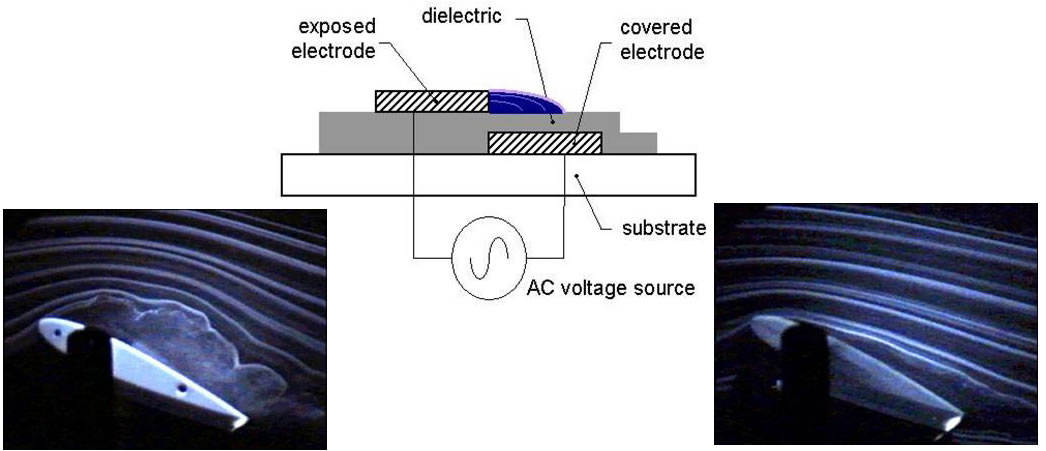
AFRL Develops Plasma Actuator Computational Model
5/1/2006 - EGLIN AIR FORCE BASE, Fla. -- Controlling subsonic aerodynamic flow by means of plasma actuators is an active area of research in both the Air Force (AF) and the general scientific community. A typical plasma actuator consists of two offset electrodes separated by a dielectric material. Plasma forms as the voltage difference between the electrodes ionizes the surrounding gas. The electric field can then direct the charged particles in the plasma to transfer their momentum to the surrounding, neutral (i.e., nonionized) air. Most of this momentum transfer occurs as a result of particle collisions. The use of plasma actuators for flow control on AF weapon systems may offer several advantages over traditional flow control devices. AFRL is developing high-fidelity computer models of the relevant physics governing plasma actuators. Knowing the charged-particle density and velocity distribution enables calculation of the momentum transferred to the neutral gas surrounding the plasma actuator. Harnessing this momentum transfer enables the flow of a neutral gas, such as air, to be controlled. Therefore, the AFRL-developed code will model the density and velocity of charged particles surrounding the plasma actuator, facilitating the calculations necessary for controlling the momentum's transfer to the neutral gas. The momentum transfer caused by the plasma actuator operates on a timescale much shorter than the duration of subsonic particle flow over an airfoil. This inherent time difference allows scientists to integrate the plasma-induced momentum change over time and apply it as an averaged quantity. They can then use this time-averaged momentum transfer in creating high-fidelity aerodynamic analysis codes that model the plasma actuator's effect on the flow of the surrounding gas. Experimental work has shown that altering the plasma actuator's electrode geometry, dielectric permittivity, and applied voltage waveform can greatly change the strength of the resulting plasma actuation. The placement of one or more plasma actuators on an aerodynamic surface can also greatly alter flow control effectiveness. AFRL's ultimate goal is to use the new analysis codes to investigate these and other variables to help designers optimize plasma actuator flow control devices for use in future AF weapon systems. 5/1/2006
This Information is public and may be distributed freely.
|
